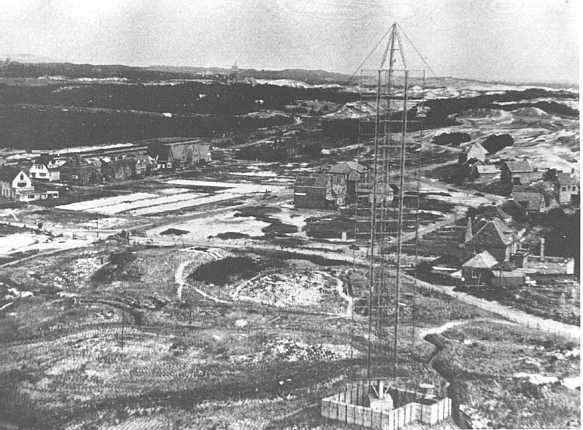In the beginning, the Allies obviously didn’t have many planes. They tried to tackle as many targets as possible simultaneously. They went in small numbers for different purposes. Later, it was different. They had become wiser and after Coventry they started doing things differently.
Large numbers to one target in one attack giving a good blow, so they wouldn’t have to go there again for a while. The English have an expression: safety in numbers. German night fighters had support from radar stations. For instance there were stations in Harderwijk, in Medemblik and Gaasterland. Radar stations were situated all along the coast. However, each radar station could only pick up one night fighter at a time! In a very wide front attack, several radar stations could pick up various night fighters. Later it became more difficult for the Germans, when the attacks came in the smallest possible front with lots of planes attacking one target, as many of the radar stations simply were not used. They couldn’t pick up the signal. Safety in numbers! That was the change in the bombing strategy of the Allies.
Coventry had been a lesson well learnt Bomber Harris became the commander of Bomber Command in early 1942 and the men literally would have gone to hell and back for him. They all liked him and still do. Nobody was allowed to get to Bomber Harris, otherwise the crews would get angry. We mustn’t forget that the RAF Bomber Command lost 47 000 men. There are still 20 000 missing.
How was it possible, how could it happen? Eavesdropping. You couldn’t do anything about it. Before your departure from England you always took a test flight. Radio traffic was used and both sides used to eavesdrop. The English listened to the Germans and in return the Germans listened to the English. They often knew if something was underway. The Germans didn’t know the target. That they had to try and figure out for themselves as well as what way they would be coming, what course they would be using. Later the aircrafts used silver paper strips to confuse the German radar and make it look like there were more aircraft in an attack, when in fact there were only ten.
